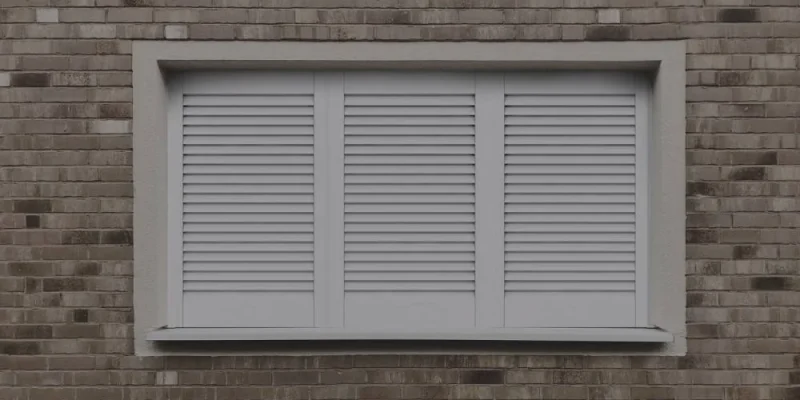When selecting windows for your home or workplace, ventilation efficiency is a major factor to consider. Windows optimize airflow, ensuring fresh air circulates indoors while maintaining comfort and health. Among the various styles available, louver windows, casement windows, and hung windows stand out for their design and ventilation capabilities. In this blog, we’ll compare these three window types, focusing specifically on louver windows and how they excel at enhancing airflow.
Key Features of Louver Windows
Louver windows have a distinct design that sets them apart. They consist of multiple parallel glass or other material panels arranged horizontally and hinged to open outward. These panels can be adjusted to control the amount of ventilation and light entering the room. Below are the key aspects of louver windows relevant to ventilation efficiency:
1. Maximum Airflow
With their adjustable slats, louver windows can create unobstructed airflow even in small spaces. When angled at optimal positions, they allow breeze to flow through while preventing rain or debris from entering the interior. This makes them especially useful in humid climates where ventilation is essential to combat dampness.
2. Customizable Ventilation
Louver windows can be partially opened for controlled air circulation or fully opened to maximize airflow. This ability to adjust gives homeowners the flexibility to adapt ventilation needs depending on weather or indoor air quality.
3. Effective Cross-Ventilation
Thanks to their horizontal design, louver windows are excellent for facilitating cross-ventilation. They allow air to flow from one side to another, refreshing the indoor atmosphere and helping to regulate temperature naturally.
4. Ventilation in Tight Spaces
Because of their design, louver windows are ideal for smaller rooms, such as bathrooms or laundry areas, that need consistent airflow. Additionally, their horizontal slats make them space-saving compared to other types of windows.
Comparing Ventilation Efficiency
To understand how louver windows stack up against other window styles like casement windows and hung windows, let’s explore their individual operational mechanics and benefits.
Casement Windows
Aluminum casement windows are hinged at the side and swing outward, much like a door. They usually allow strong, direct airflow when fully opened.
Pros: Casement windows can funnel breezes into the home, especially if positioned perpendicular to the wind direction, allowing for effective ventilation.
Cons: Unlike louver windows, casement windows cannot offer partial ventilation in every scenario. They are either open or closed, limiting the degree of control you have over airflow.
Hung Windows
Aluminum hung windows come in two varieties: single-hung (where only the bottom sash moves) and double-hung (where both sashes are movable). Airflow depends on how much of the sash you open.
Pros: Double-hung windows allow ventilation both at the bottom and top of the frame, helping warm air escape through the upper sash.
Cons: Hung windows usually provide less airflow compared to casement or louver designs since the opening is restricted to the size of the sash being moved.
Why Louver Windows Stand Out
Louver windows dominate in terms of ventilation efficiency due to their constant adjustability, space-saving design, and ability to function effectively in tropical climates or areas prone to humidity. Unlike casement or hung windows, they can be partially opened even during rainstorms, maintaining airflow without compromising on protection.
Real-Life Applications
Louver windows are prized for their practicality in specific scenarios:
Tropical Homes: Ideal for humid environments where ventilation is critical for moisture control.
Commercial Spaces: Often used in ventilation-centric facilities like gyms, kitchens, and workshops.
Compact Areas: Their slim profile makes them a great choice for bathrooms, laundry rooms, and stairwells.
When comparing louver, casement, and hung windows for ventilation efficiency, louver windows emerge as a versatile and reliable option. Their ability to facilitate constant, adjustable airflow without compromising on protection makes them a winner, particularly in climates that require consistent ventilation. If you’re designing a space where airflow is a priority, louver windows are worth considering.
By combining aesthetics with functionality, louver windows provide a smart solution for achieving optimal indoor air quality. They may just be the missing piece in creating your ideal living or working environment!

Comments